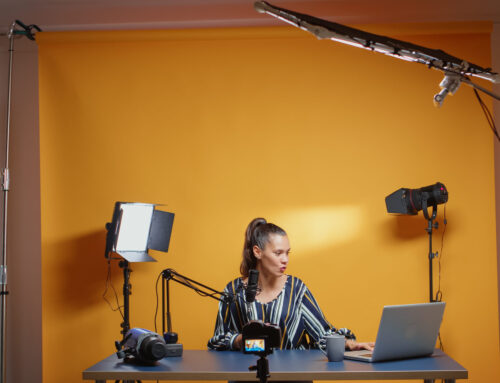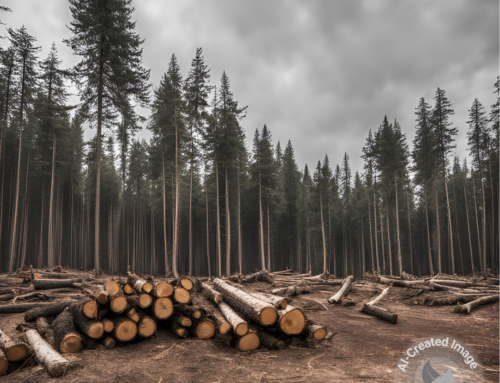When does a nonprofit need a model release? This is a frequent question from nonprofit communicators. Before I answer, let me share this true story (I swear, it really is true).
A nonprofit hosts a fundraiser that includes a dance band. The newsletter editor wants to include a photo of the band in the newsletter. A board member, who is also an attorney, reviews the newsletter and insists that the newsletter editor must get a model release from the band members before using the photo. Newsletter editor does her best, but can only get in touch with half of the band members before the print deadline. Rather than pull the photo or blow off the board member, she blurs the faces of the band members she can’t reach and prints the newsletter. In other words, her newsletter includes a photo in which it appears that half of the band is “innocent until proven guilty” on Cops.
I would not have believed this story had she not shown me a copy of the actual newsletter.
This is completely ridiculous and an excellent example of board members stepping in where they do not belong. Not only is this micromanagement by a board member, which is generally frowned upon, but the legal advice was a bunch of hooey. But I digress.
Why all the confusion about model releases? Because the whole issue of model releases falls into a gray area of First Amendment law. There are no hard and fast rules — every answer to a model release question is subject to any number of caveats. Here’s one right now: I am not an attorney. But as this example shows, even attorneys practicing criminal or family law will often get it wrong. If you feel you need a completely solid answer for your specific case, hire a First Amendment lawyer. If you are looking for the general rules of the game that can apply to nearly all nonprofit situations, read on.
If you are publishing a photo for information or educational purposes, not commercial purposes like product advertising, you can typically print it without a model release. The majority of nonprofit publications fall into this category. Model releases are all about the use of the photo, not the fact that it was taken. Do you think newspaper photographers get model releases from criminals on perp walks or the paparazzi chasing Hollywood actresses ask for model releases? Of course not. And they are selling the photos to magazine publishers and the publishers are selling magazines to you. Money is changing hands and yet no model release is legally required because these are considered informational or educational purposes, as would most nonprofit publications.
You are also fine without a release if the person is truly unrecognizable. You are usually fine if you are not hiding the fact that you are taking photos and you are in a public place and are not breaking any laws. You are also fine in private locations as long as you have the owner’s or event sponsor’s permission.
That’s the basic law. But that doesn’t mean following these rules, and therefore neglecting to get a model release in most nonprofit situations, is necessarily the smartest choice politically or professionally.
So what’s a nonprofit to do? Use your common sense.
For example, I wouldn’t give a second thought to a photo of a band playing at a party. They are probably thrilled with the extra exposure — until you blur half of the band members’ faces. That’s what I’d be mad about if I were in the band. Forget the model release in this case.
What about participants in your various programs? To be on the safe side, I would try to get a signed model release. It doesn’t have to be a huge ordeal.
Here is some sample legalese for a release from Hurwit & Associates, a law firm serving nonprofits, and here is the much scaled-down version used by the National Science Teachers Association. To make it easy on yourself, you can put something like this at the top of a sheet of paper and leave lots of rows below it where people can sign. I just put something like this together for a client who wants to do “man on the street” interviews to chronicle public opinion on their issue. Remember, you only need the release if you actually use the photo (and remember, legally, you probably don’t really need it then). You can go back later and get permission once you know what photos you want to use, but that only works if you can identify everyone in the photo weeks or months later.
If you make participants sign other kinds of applications or waivers, simply add this language to those forms. It’s my understanding that big events like conferences are considered public and since there is no expectation of privacy, you don’t really need a release from the hundreds of people at your event. If you were really concerned about it, you could include the release as part of your registration form or ask people to sign it when they pick up their registration materials.
I managed the photography and publications for a conference of about 1,000 people for several years. We didn’t get model releases, even though we posted hundreds of photos online and used last year’s photos in the current year’s conference marketing materials. I sorted through every photo to take out any that were clearly unflattering (eyes half-closed, food sticking out of the mouth, hands appearing to touch places they didn’t belong). We put a note on the website that said we would take down any photo if a person in the photo asked in writing. In four years of following this practice, we never once received a request to remove a photo. A few people complained about the photographer getting in their way at the event, but that was it, and those people complained about lots of things. People loved seeing the photos from the event afterwards and those who appeared in the marketing materials were flattered.
What about kids? This is the only place where I say without question, always get a signed release by the guardian for children under 18. When children are involved, you enter into a whole new realm of law and best practices.
Want more? These are the two best (in other words, clear and pragmatic) explanations I’ve found online:
Frequently Asked Questions about Releases from the American Society of Media Photographers
A Very Brief Model Release Primer from a professional photographer’s blog





